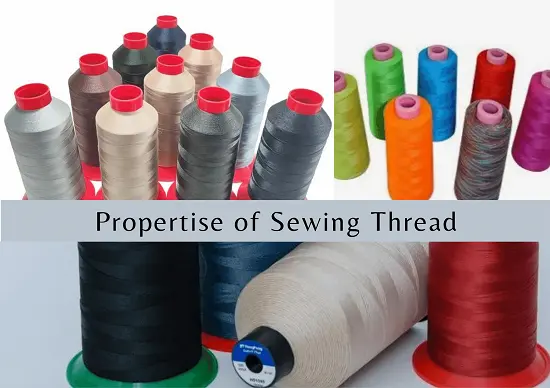10 Properties of Sewing Thread Used for Clothing
Different types of yarn, regardless of fiber, that is for hand or machine sewing. It is treated with solid or semi-solid waxy materials to secure a smooth, compact strand that is quite flexible but presents no loose fibers. The yarn is usually plied. Sewing thread is the main trim of the garment. Sewing thread is directly related to the quality of the seam. For example, appearance, and loop /seam strength. We discuss 10 Properties of Sewing Thread Used for Clothing in this article. The quality of garments depends on the sewing thread. Sewing thread has some properties which are pointed out below:
The sewing thread is much stronger than the yarn. Sewing is being done with high tension and speed. So the thread should be stronger. Like this, lots of other properties are required for sewing thread to perform the sewing process for clothes. Those necessary properties are strength to tenacity, elasticity, Color fastness, uniformity, and many others to maintain.

10 Properties of Sewing Thread:
1. Tensile Strength
- The minimum load required to break the thread is known as the tensile strength of that thread.
- It is denoted by gm, kg, or lbs & may vary depending on temperature, humidity & rate of return.
- This is used to determine the difference in tensile strength of threads of the same size or ticket number.
2. Tenacity:
- The ratio of tensile strength & count or thickness of that thread is known as tenacity.
- The strength & quality of various count threads is verified by tenacity as it is the strength per unit thickness.
- It is expressed by gm per denier or gm per tex.
3. Loop strength:
- The sewing thread has minimum strength in its loop position & the minimum load required to break the loop is known as loop strength.
- Loop strength is deeply related to the stitch strength of a thread.
4. Loop strength ratio:
- The ratio of thread tenacity & loop strength of that thread is known as the loop strength ratio.
- The maximum value of the loop strength ratio maybe 2.
- It is used to determine the efficiency of thread in the stitch.
5. Minimum loop strength :
- The loop strength of a weaker thread is known as minimum loop strength.
- Minimum loop strength is used to determine the performance of a thread in the stitch.
6. Elongation at break:
- It is the extension of the thread at the breaking point.
- This is expressed as a percentage.
- This is most important for the extensibility of seam.
7. Stress-strain curve:
- It is the drawing curve of tenacity that opposes the elongation of the thread.
- To compare the values of two threads, it is most important.
8. Elasticity:
- It is the property under which the thread returns to its original position when the deforming force is released.
- When the thread is back to its original position after extension, it is called elastic.
- Most of the threads are situated in the middle position of the elastic & plastic.
9. Color fastness:
The resistance of a thread to change in any of its color characteristics, to transfer of its colorant materials, or both as a result of the exposure of the thread to any environment that might be encountered during the processing, testing, storage, or use of thread.
10. Uniformity:
The thread should be uniform from the first to the last according to its count. Commonly found imperfections are knots, dropped ply, thick and thin places, slubs, neps, and single kinks the less the better.
Conclusion
In summary, sewing thread has different types of properties that make it strong and perfect for the sewing process, designed to satisfy the demands of sewing activities. Each attribute—strength, flexibility, color fastness, and abrasion resistance, for example—is essential to guaranteeing the caliber and durability of the completed garment. For the 10 Properties of Sewing Thread Used for Clothing, Sewers produce clothes that are long-lasting and look professional by being aware of these qualities and using the right thread for each sewing process.
- You may love to read: Difference between Yarn and Thread
